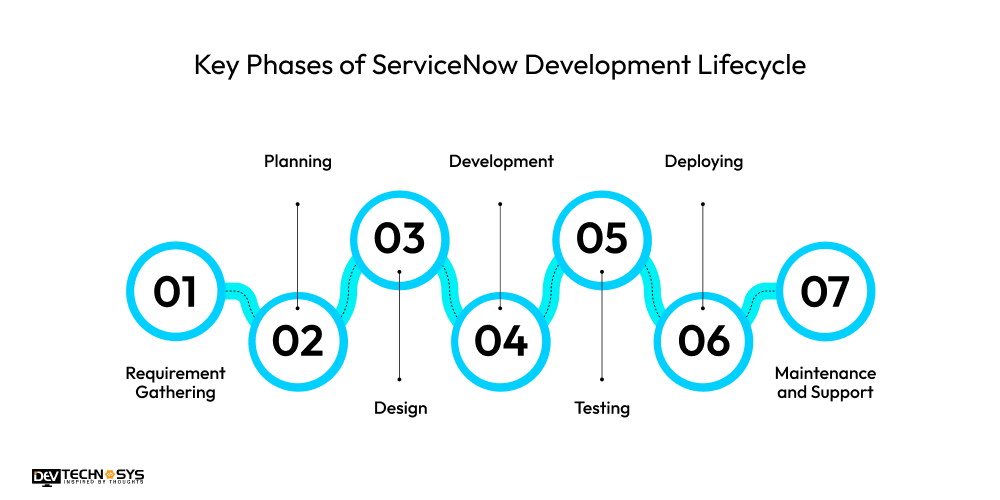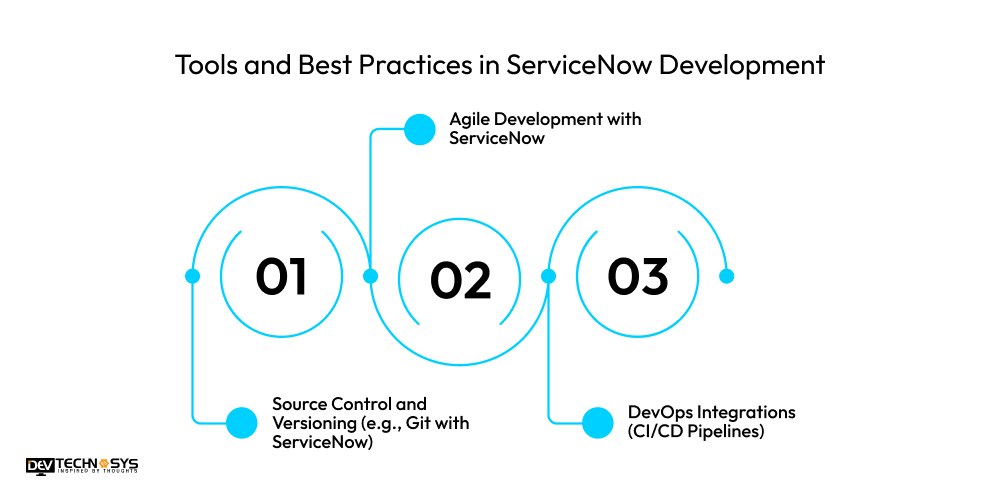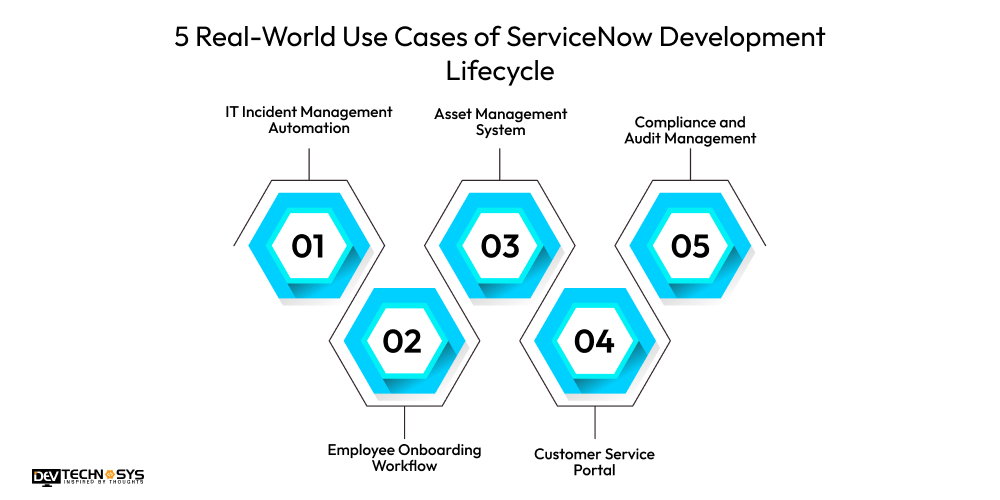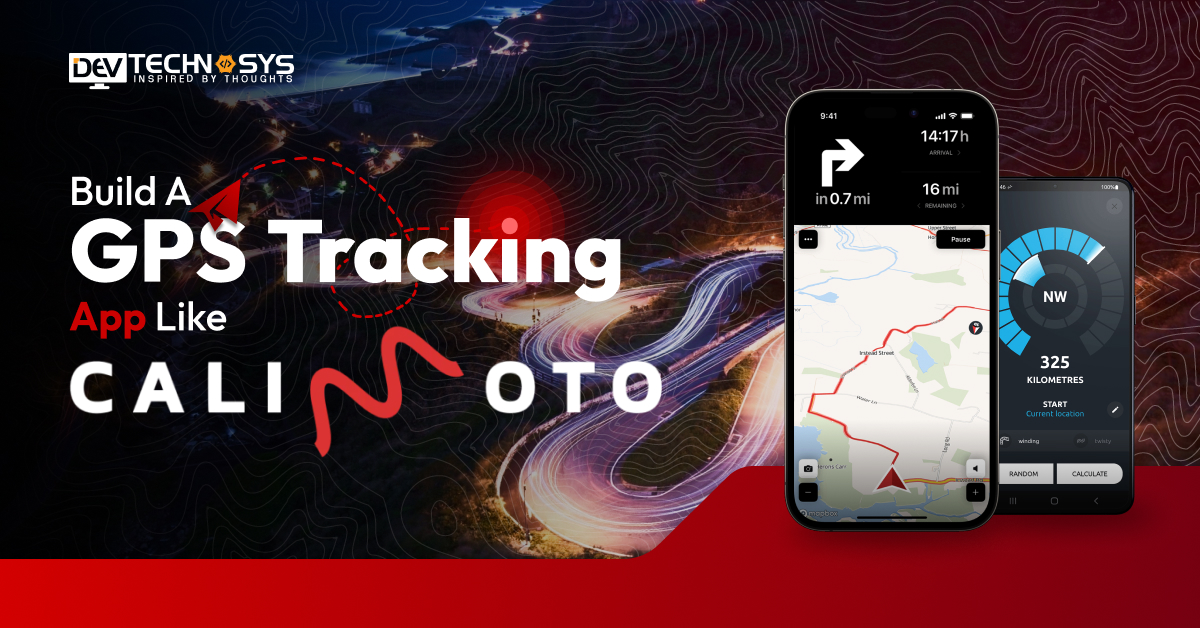“Design, Develop, Deliver”
Building a successful application or platform is a good thing to capture the digital world, but developing with proper planning and guidance is necessary.
If you are a technology enthusiast, you definitely know about the ServiceNow platform, which provides a step-by-step guide to developing a successful platform or digital solution.
As per the global report, the revenue of ServiceNow has been increasing at a steady pace of 3.7% every quarter on average. By 2026, ServiceNow is expected to generate $15 billion in sales.
The above data depicts how rapidly many entrepreneurs are using them to integrate innovations into their digital platforms.
Let’s explore the ServiceNow development lifecycle, tools, best practices, and real-world use cases.
Stay on!
What is ServiceNow Development LifeCycle?
The ServiceNow Development Lifecycle is a structured process for building, testing, deploying, and maintaining applications on the ServiceNow platform.
It involves key phases such as requirement gathering, planning, designing, development, testing, deployment, and ongoing Servicenow support services.
This lifecycle ensures efficient, high-quality app delivery that meets business needs while maintaining security and scalability. Following it helps teams manage projects effectively and continuously improve ServiceNow solutions for better user experiences.
Key Phases of ServiceNow Development Lifecycle
The ServiceNow Development Lifecycle consists of essential phases, including requirement gathering, planning, design, development, testing, deployment, and maintenance.
Each ServiceNow development phase plays a critical role in delivering efficient, secure, and scalable applications that align with business goals and ensure seamless service management and automation. Here, we provide the the full ServiceNow development lifecycle guide:

1. Requirement Gathering
This first phase focuses on comprehending the business challenge and outlining what the application should do. Stakeholders, end users, and developers work together to document user stories, functional requirements, and intended results.
Hire ServiceNow developers to clear criteria, limit scope creep and guide development. These inputs may be managed and tracked using ServiceNow solutions such as Agile Development or Demand Management.
This phase establishes the foundation for the whole project and ensures that the development team creates a solution that aligns with company objectives, increases productivity, and satisfies end-user expectations.
2. Planning
During the planning phase, the development team converts the requirements into a structured roadmap. Tasks are prioritized, deadlines are established, and resources are allotted.
Planning includes identifying important milestones, dependencies, and hazards. Agile approaches are frequently used to divide tasks into manageable sprints. This phase guarantees team members’ clarity and establishes expectations for deliveries.
Planning also involves deciding which ServiceNow modules or technologies to employ in the project. A well-planned project ensures timely execution, effective resource use, and greater alignment with key company objectives.
3. Design
This step determines how the program will perform and appear. It entails developing processes, data models, tables, forms, and user interfaces. Developers prioritize usability, speed, and scalability.
UI/UX considerations are critical in creating an app that is both intuitive and efficient. Servicenow implementation services such as flowcharts, wireframes, and architecture diagrams assist to envision the solution.
Tools like App Engine Studio and ServiceNow Studio are often utilized. This phase guarantees that the solution’s architecture is strong and fits technical and business requirements before coding begins, reducing rework later on.
4. Development
During the fourth ServiceNow development process, developers create the real application according to the design criteria. Forms, business rules, client scripts, and integrations are built using ServiceNow’s low-code/no-code tools or by scripting using JavaScript and the Glide API.
Development is frequently done in a scoped application to isolate changes. Developers may also customize platform features such as alerts, processes, and security settings.
The code is version-controlled, and development is matched with sprint goals. Regular code reviews and checks guarantee quality, reduce mistakes, and prepare the program for testing.
5. Testing
Testing guarantees that the application performs as expected, fulfills requirements, and is bug-free. It encompasses unit testing, functional testing, regression testing, and user acceptability testing (UAT).
ServiceNow’s Automated Test Framework (ATF) enables reusable, automated test cases, minimizing human labor and speeding up releases. The QA team tests performance, security, and usability.
Defects are reported and fixed before going into production. ServiceNow managed services guarantees that the program is robust and dependable, allowing end users to have a smooth experience.
6. Deploying
Once testing is completed, the software is put into production. This phase entails change management, version tracking, and the transfer of update sets or apps from development to testing and then to production.
To prevent disturbances, deployment should be scheduled during off-peak hours. ServiceNow’s Application Repository and CI/CD pipelines can help to speed this procedure.
Pre-deployment checklists and rollback plans are critical in case problems develop. Successful deployment guarantees that the application goes live seamlessly, with low risk and maximum readiness for commercial usage.
7. Maintenance and Support
Following deployment, the program enters the maintenance phase, which includes continuing assistance to resolve issues, improve functionality, and respond to user comments.
Performance monitoring, using data, and frequent upgrades ensure the app’s security and efficiency. ServiceNow updates may necessitate changes to guarantee compatibility.
A robust ServiceNow consulting service provides ongoing user happiness, enhanced functionality over time, and alignment with changing corporate requirements. Maintenance also includes training end users and keeping documentation for future development or onboarding new team members.
Interested in a chatbot demo, pricing, or more info? Fill out the form our expert will contact you shortly.
-
Chatbot Demo
-
Cost to Develop an app
-
Industry Report
-
Case Study
Tools and Best Practices in ServiceNow Development
Maximize efficiency and code quality in ServiceNow development with essential tools like Git for version control, Agile for project management, and DevOps integrations for CI/CD automation—ensuring faster delivery, collaboration, and consistent application performance.

1. Source Control and Versioning (e.g., Git with ServiceNow)
Source control is essential for managing changes in ServiceNow SDLC, especially when multiple developers are working on the same project. ServiceNow supports integration with Git repositories, allowing developers to manage and track their changes in a version-controlled environment.
Key Benefits:
- Tracks all changes made to code and configuration files.
- Allows multiple developers to work on the same app without conflicts.
- Enables rollback to previous versions in case of issues.
- Ensures consistency between development, test, and production environments.
How It Works:
- Scoped applications in ServiceNow can be linked to Git repositories.
- Developers commit and push code changes using Studio IDE.
- Changes are reviewed and merged through Git workflows (e.g., GitHub, GitLab, Bitbucket).
2. Agile Development with ServiceNow
ServiceNow provides a IT service management that helps teams manage their software development lifecycle using Agile methodologies like Scrum or Kanban.
Key Features:
- Epics, Stories, Tasks: Organize development work into clear, manageable units.
- Backlogs and Sprints: Plan and execute work in time-boxed iterations.
- Team Workspaces: Centralized views for scrum teams to collaborate.
- Velocity Charts and Burn-Down Reports: Track progress and identify bottlenecks.
Benefits:
- Improved collaboration between stakeholders and developers.
- Greater visibility into progress and priorities.
- Flexible and iterative development that adapts to change.
Agile practices in ServiceNow ensure that development is user-focused, incremental, and aligned with business goals.
3. DevOps Integrations (CI/CD Pipelines)
ServiceNow supports DevOps integration to enable Continuous Integration (CI) and Continuous Deployment (CD), streamlining development workflows and reducing manual effort.
Key Components:
- ServiceNow DevOps Module: Acts as a bridge between ServiceNow and DevOps tools like Jenkins, Azure DevOps, GitHub Actions, etc.
- Change Automation: Automatically create and approve changes based on successful code deployments.
- Policy Gates: Enforce quality and security checks (e.g., testing, code review) before allowing deployments.
- Orchestration: Automate deployments across development, test, and production instances.
Benefits:
- Faster, more reliable releases with reduced manual intervention.
- Improved compliance through automated change management.
- Real-time tracking and audit of development-to-deployment pipelines.
What are the challenges of the ServiceNow Development Lifecycle?
The ServiceNow agile development lifecycle faces challenges such as unclear requirements, scope creep, complex integrations, deployment risks, and ongoing maintenance overhead.
Addressing these issues through proper planning, skilled resources, testing, and change management is crucial for delivering reliable, scalable, and efficient ServiceNow solutions.
1. The Requirement Misalignment
Inadequate or unclear criteria might lead to the generated solution failing to meet company demands. Frequent changes without sufficient documentation cause confusion, rework, and delays.
Continuous stakeholder involvement and transparent communication are essential for aligning development efforts with real-world expectations and avoiding costly errors.
2. Scope Creep
Adding things beyond the initial design during development frequently results in project delays and expense overruns. Without strong change control and prioritization, teams may lose focus, leading in poor quality and missed deadlines. Proper sprint planning and stakeholder agreement assist to control scope and provide a stable, functional result.
3. Complexities of Integration
Connecting ServiceNow to other systems such as HR or ERP presents difficult API setups, security concerns, and data synchronization problems.
Integration errors can disrupt activities and result in data discrepancies. Skilled developers and rigorous testing are required to provide ServiceNow migration services that improve overall platform capabilities.
4. Deployment Risks
Improper application deployment increases the risk of data loss, damaged functionality, and downtime. Inconsistencies can occur when conventional procedures such as propagating update sets through dev, test, and production environments are not followed. Careful change management, backups, and rollback procedures reduce risks while ensuring seamless, controlled releases.
5. Maintenance Overhead
Heavy customisation and bespoke code impede future platform updates, raising the possibility of compatibility difficulties. Apps that are not maintained and refactored on a regular basis may become unstable or insecure.
Establishing code standards, documentation, and continuing support practices is critical to sustaining a healthy ServiceNow environment in the long run.
5 Real-World Use Cases of ServiceNow Development Lifecycle
Explore five practical examples showcasing how the ServiceNow application development lifecycle drives successful automation in IT incident management, employee onboarding, asset tracking, ServiceNow service portal, and compliance management—highlighting improved efficiency, seamless integration, and enhanced user experience across diverse industries and business functions:

1. IT Incident Management Automation
A worldwide corporation used ServiceNow to automate IT incident management, increasing ticket tracking, prioritizing, and SLA compliance.
The lifecycle ensured that workflows, alerts, and reporting were developed, tested, and deployed seamlessly. This led to faster issue response and higher consumer satisfaction across several areas.
2. Employee Onboarding Workflow
A company optimized employee onboarding by automating task allocations to HR, IT, and Facilities using ServiceNow. Use ServiceNow for IT service management, which can integrate workflows that lower onboarding time by 60%, eliminate manual mistakes, and enhance the new hire experience through consistent communication and asset provisioning.
3. Asset Management System
A manufacturing company developed a strategic portfolio management tool to track equipment lifecycles, maintenance schedules, and depreciation.
Following the development lifecycle, they guaranteed seamless connectivity with existing ERP systems, automatic maintenance notifications, and real-time asset reporting, all of which improved operational efficiency and reduced downtime.
4. Customer Service Portal
A retail firm built a customer support site on ServiceNow that allows for self-help for returns, complaints, and queries. The development lifecycle contributed to the creation of user-friendly forms, automatic ticket routing, and integrated chat assistance, resulting in increased customer satisfaction and reduced support team burden.
5. Compliance and Audit Management
A financial institution used the ServiceNow software to manage compliance duties, audits, and policy reviews. The lifecycle method enabled thorough requirement analysis, secure role-based access, and automatic audit trails. This improved regulatory compliance and streamlined reporting during audits, lowering risk and manual work.
Conclusion
In conclusion, the ServiceNow Development Lifecycle helps companies build and improve apps step by step. It makes sure everything is planned, tested, and works well before being used by real people. Following this lifecycle saves time, avoids mistakes, and helps teams work together better.
If you want to create a strong and reliable ServiceNow app, it’s smart to work with a good ServiceNow development company. They have the skills and experience to guide you through each phase and deliver a great solution that meets your needs.
Frequently Asked Questions
1. Why is the Development Lifecycle Important in ServiceNow?
The development lifecycle in ServiceNow is important because it ensures organized, efficient app creation, reduces errors, improves collaboration, and delivers high-quality, scalable solutions that meet business needs while enabling smooth deployment and ongoing maintenance.
2. What Tools Are Commonly Used in the ServiceNow Development Lifecycle?
Common tools in the ServiceNow implementation lifecycle include ServiceNow Studio for coding, Flow Designer for workflow automation, Git for version control, Automated Test Framework (ATF) for testing, and CI/CD pipelines for continuous integration and deployment.
3. Can ServiceNow Integrate with External Systems During Development?
Yes, ServiceNow can integrate with external systems during development using APIs, REST and SOAP web services, IntegrationHub, and custom connectors, enabling seamless data exchange and workflow automation across different platforms and business applications.
4. How Does DevOps Improve the ServiceNow Development Lifecycle?
DevOps improves the ServiceNow project lifecycle by automating development, testing, and deployment processes. It enhances collaboration, reduces errors, accelerates delivery, and ensures consistent, high-quality updates through continuous integration and continuous delivery (CI/CD) practices.
5. What Skills Are Needed for a ServiceNow Developer?
A ServiceNow developer needs skills in JavaScript, Glide scripting, ServiceNow Studio, Flow Designer, REST/SOAP APIs, UI/UX design, Agile methodologies, and an understanding of ITSM processes to build, customize, and integrate scalable ServiceNow applications effectively.

































